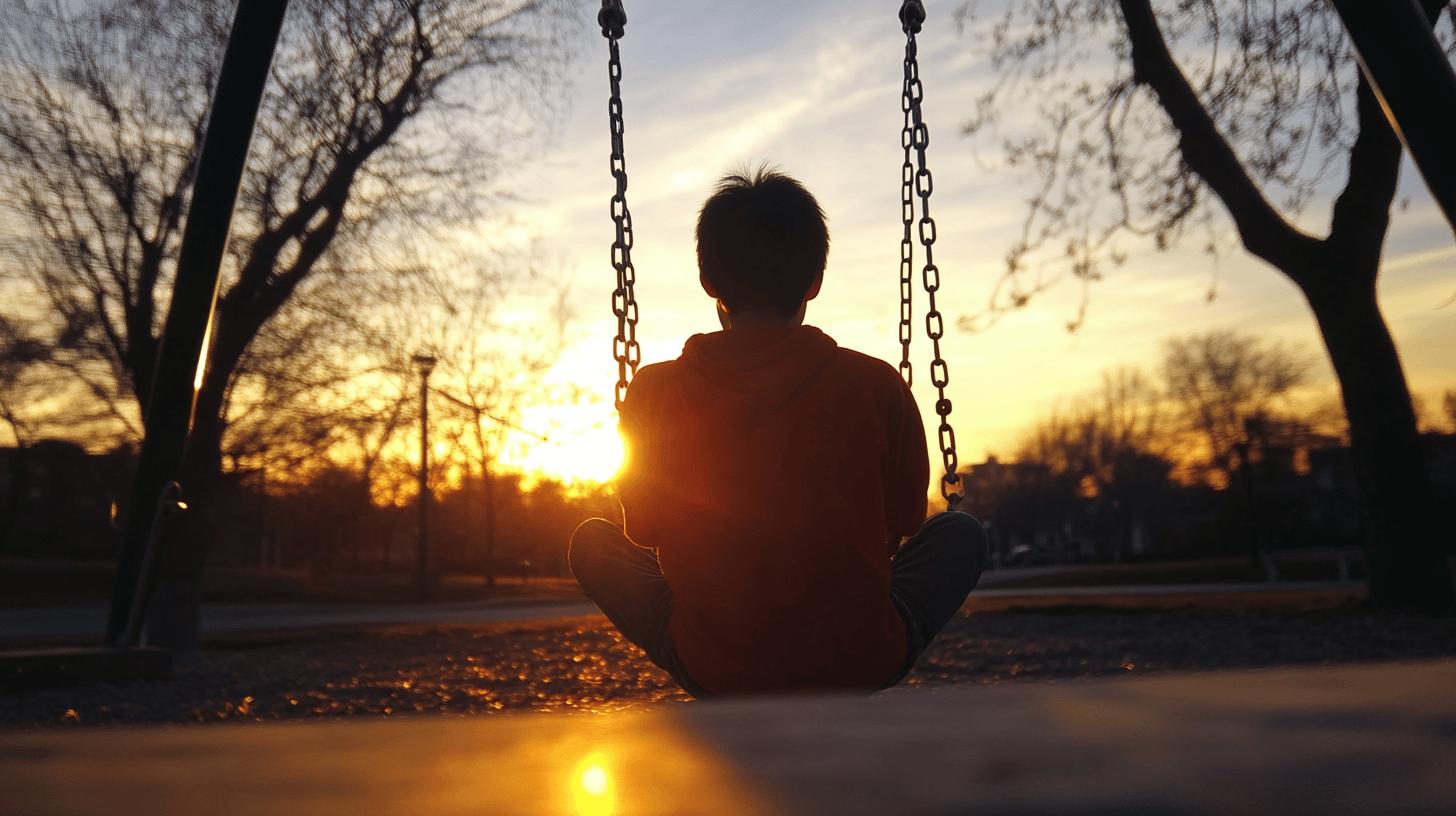Can a song truly capture the weight of child abuse and help change the narrative? Songs about child abuse offer more than just melody; they deliver powerful messages and emotional support. Addressing the harsh realities of abuse, these tracks raise awareness and serve as tools for advocacy and healing.
Across genres, music addressing child abuse taps into emotional depths, offering solace and encouraging discussions. This blog post sheds light on the impact of these songs, their role in raising awareness, and the healing they inspire for both survivors and listeners.
Exploring Songs About Child Abuse: Impact and Awareness

Songs about child abuse serve as powerful instruments in raising awareness and providing solace, bridging the gap between personal struggles and public consciousness. These songs convey the harsh realities of abuse, offering emotional support to survivors and educating listeners about the issue.
What is the primary aim of songs addressing child abuse? The primary aim is to educate and raise awareness about the significance of child abuse. By addressing child abuse, these songs highlight its gravity and foster empathy among listeners.
Music addressing child abuse spans various genres, from pop and rock to country and rap, each adding a unique voice to the conversation. For instance, pop songs often employ compelling melodies to convey their messages, while rock songs might use powerful instrumentals to emphasize the emotional weight of the lyrics.
How do these songs impact listeners? They evoke emotional responses, helping listeners connect with the experiences of victims. This connection can lead to increased empathy and understanding, highlighting the severity of child abuse.
Songs like “Concrete Angel” by Martina McBride and “Luka” by Suzanne Vega are poignant examples that resonate with audiences, sparking discussions and advocacy efforts. These tracks not only provide comfort to those affected but also empower individuals to speak out against abuse.
The importance of their messages cannot be overstated. By bringing the issue into the public domain, these songs encourage conversations that can lead to change, ensuring that child abuse remains a topic of societal concern and action.
Notable Songs Addressing Child Abuse

Songs addressing child abuse often use poignant lyrics and emotional storytelling to confront the issue and raise awareness. “Concrete Angel” by Martina McBride is a powerful example. What is the song about? The song tells the story of a young girl suffering from abuse, ultimately leading to her tragic death.
Through vivid imagery, the lyrics evoke a deep emotional reaction, highlighting the often-overlooked suffering of abused children. McBride’s emotional delivery further enhances the impact, making it a poignant anthem for awareness and change.
“Luka” by Suzanne Vega is another notable track. What is the main message of “Luka”? This song offers a narrative from the perspective of a child experiencing maltreatment. The lyrics subtly hint at the abuse, with the protagonist maintaining a façade of normalcy. Vega’s storytelling invites listeners to read between the lines, emphasizing the silent struggles many children face.
The song encourages listeners to be more observant and empathetic towards signs of abuse. “Childhood” by Michael Jackson is also significant. How does this song address child abuse? Rather than focusing on physical abuse, it delves into emotional trauma.
Jackson reflects on his own lost childhood, illustrating how early pressures and expectations can emotionally scar a child. The song conveys a sense of longing and vulnerability, resonating with those who have experienced similar emotional neglect.
These songs not only provide comfort to those affected by abuse but also serve as catalysts for discussions and advocacy. By bringing these issues to the forefront, they inspire listeners to become more aware and proactive in preventing child abuse.
Through their storytelling, these songs foster a greater understanding of the complexities surrounding child maltreatment, encouraging empathy and action.
The Emotional Impact of Songs About Child Abuse

Music addressing child abuse can evoke profound emotional responses. What makes these songs impactful? The emotional storytelling in these songs helps listeners connect with the experiences of victims, providing a deeper understanding of the severity of the issue.
By tapping into universal emotions, these songs allow listeners to empathize with the pain and struggles faced by survivors. This connection is not only therapeutic for those who have experienced abuse but also raises public awareness, encouraging society to be more vigilant and supportive.
How does music serve as a healing tool? By offering solace and validation, music becomes a refuge for those who feel isolated by their experiences. Songs like “Concrete Angel” by Martina McBride and “Luka” by Suzanne Vega resonate with audiences by illustrating the harsh realities of abuse through powerful narratives.
These tracks not only provide comfort but also inspire listeners to engage in meaningful discussions about child abuse, fostering a supportive environment for healing.
The role of music in raising awareness cannot be overstated. It transforms personal stories into collective consciousness, empowering individuals to speak out against abuse. By highlighting the emotional impact of child maltreatment, music encourages empathy and action, ultimately contributing to societal change.
Through their poignant messages, these songs act as catalysts for advocacy, ensuring that the voices of survivors are heard and understood.
Artists and Their Personal Experiences with Child Abuse

How do personal experiences influence music about child abuse? Personal experiences infuse authenticity and urgency into songs, capturing the raw emotions associated with the issue. Artists who have lived through or witnessed abuse often channel their trauma into music, transforming personal pain into powerful narratives that resonate with listeners.
Eminem, for instance, frequently addresses his tumultuous childhood in his lyrics. His song “Cleanin’ Out My Closet” reflects on the emotional abuse he endured, offering a candid glimpse into his past. By sharing his story, Eminem not only processes his own trauma but also validates the experiences of others who have suffered similarly.
Another example is Christina Aguilera’s “I’m OK,” which draws from her experiences with domestic violence. The song’s poignant lyrics and emotive delivery highlight the impacts of abuse, encouraging empathy and understanding. Aguilera’s openness about her past inspires listeners to confront and discuss similar issues, fostering a sense of community and support.
These personal stories in music serve a dual purpose. They provide catharsis for the artist while simultaneously educating and raising awareness among audiences. By sharing their experiences, musicians against abuse create a platform for dialogue, helping listeners understand the complexities of child maltreatment and encouraging societal change.
Healing and Advocacy Through Music

How does music facilitate healing for child abuse survivors? Music therapy is an effective tool for healing, providing a safe space for survivors to process their emotions and find solace. This therapeutic approach uses music’s inherent emotional power to help individuals articulate feelings they might struggle to express verbally.
Engaging in music therapy can assist survivors in overcoming adversity by fostering emotional resilience and encouraging personal growth. What role do empowering songs play in advocacy and healing? Songs with messages of resilience and hope empower individuals, motivating them to overcome challenges and advocate for change.
Tracks like “Survivor” by Destiny’s Child and “Fight Song” by Rachel Platten convey themes of strength and perseverance, resonating deeply with listeners who have experienced trauma. These songs offer comfort and inspiration, encouraging survivors to believe in their capacity to heal and thrive.
Music’s influence extends beyond individual healing, promoting social change and advocacy. How does music inspire societal transformation? By raising awareness and fostering empathy, music highlights issues that require collective action. For instance, the song “Praying” by Kesha addresses themes of overcoming abuse and seeking justice, inspiring listeners to support survivors and advocate for systemic change.
The power of music lies in its ability to connect personal experiences with broader social movements, turning private struggles into public dialogues. This transformation encourages listeners to become advocates for change, supporting efforts to combat child abuse and promote healing within communities.
Through its emotional resonance and universal appeal, music continues to be a vital tool for healing and advocacy, offering hope and solidarity to those affected by abuse.
Final Words
Songs about child abuse illuminate the grim realities many endure, offering a platform for awareness and solace. Notable artists have gifted poignant narratives through tracks like “Concrete Angel,” fostering empathy and understanding.
The emotional gravity of these songs transforms music into a powerful healing tool, resonating deeply with audiences. Personal artist experiences further authenticate these messages. Embracing the transformative potential of music, listeners can support advocacy and healing for survivors.
FAQ
Q: What is the purpose of songs about child abuse?
A: Songs about child abuse aim to raise awareness, provide solace, and educate listeners about the harsh realities of abuse. They serve both as tools for advocacy and as a means of healing for those affected.
Q: Can you give examples of notable songs addressing child abuse?
A: Notable songs include “Concrete Angel” by Martina McBride and “Luka” by Suzanne Vega. These tracks use emotional storytelling and poignant lyrics to highlight the struggles of child abuse victims and raise public awareness.
Q: How do songs about child abuse impact listeners emotionally?
A: Songs about child abuse evoke strong emotional responses, providing comfort to survivors and increasing awareness. They use storytelling to help listeners empathize with victims and understand the seriousness of the issue.
Q: How do personal experiences influence artists’ songs on child abuse?
A: Some artists draw from personal experiences to craft authentic and urgent music about child abuse. These connections encourage empathy among listeners and increase attention toward addressing the issue.
Q: How can music help in healing and advocacy for child abuse survivors?
A: Music therapy aids healing by helping survivors process emotions and find solace. Empowering songs promote resilience and social change, offering support and inspiration to those affected by child abuse.

